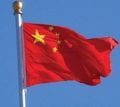This is the first article in a series by Tim Buckley, portfolio manager at ArkX Investment Management, looking at global clean energy leaders.
With much of the Australian media taking its lead from American issues, the climate change debate in the Australian press is blurred at best. Elsewhere, the situation is more positive. In world leading economies such as China and Germany, huge investments are being made to transform these economies to best position them for a low carbon future. The benefits of improved energy security, stronger trade balances, growth in employment, technology and industry leadership, not to ignore the associated environmental gains, are increasingly evident. In our view it is timely to review recent advances in the Chinese green economy. Many are world leading and their implications for the global economy in the next few decades should not be underestimated.
For all its faults, the Chinese political system has allowed the Hu-Wen administration to focus on the long term positioning of the country. The gigantic surge in Chinese energy consumption means dealing with the associated escalation of national energy security risks is exceptionally high on the list of government priorities. Cementing China’s technology and industry leadership in high value added industries of a low carbon economy therefore dominates the 12th Five Year Plan. Dealing with the environmental pressures and resulting health issues gives an added imperative to the Hu-Wen administration to deal with emissions pollution.
To this end, there has been significant progress in China’s comprehensive national energy plan which contains a number of mutually dependent features. Key amongst these is the marshalling of financial, industrial and technological resources to fund a multi-decade plan to lift energy generation from domestic renewable sources. Initially focused on hydro and on-shore wind, more recently this has been expanded to offshore-wind, solar photovoltaic (PV) and energy-from-waste. However, China has had to first commission a national smart grid rollout. This involves a decade-long program of investment to upgrade the transmission network (high voltage direct current cabling nation-wide) coupled with a rollout of 300 million smart meters. Given the rapid urbanization and industrialization of the economy, per-capita consumption of energy continues to accelerate. As such, the government has mandated significant gains in energy efficiency. China is aiming to increase its technology and industrial self-sufficiency and global leadership, both to best gain from the high value employment opportunities and build its export domination of these newly emerging global industries.
While we are unashamedly China bulls, we recognize that China’s growth challenge is so large that demand for coal, gas and oil will continue to rise for at least another decade, notwithstanding all these positive moves. China’s carbon emissions will continue to rise as a result. However, the size of the country and rate of China’s GDP growth means it needs every available clean energy solution in orders of magnitude greater than anywhere else in the world. That said, China is doing all it can to address these issues within the context of moving towards a more sustainable economic model. While China is also making mistakes in the process by trying to move too fast (witness the July 2011 Wenzhou rail disaster) the quantity of capital investment is such that China is driving down the costs of these emerging technologies and building economies of scale.
Thus far, we have made a number of generalisations about China’s low carbon economy plans. It is useful to provide a snapshot of supporting facts which we consider provides a basis for our bullish view.
Rare Earths Monopoly
Nations work in their own self interest as a primary motive and China is no exception. It is not at all comfortable in being reliant on Australian coal, Iranian oil, Russian gas or German technology. China wants to move into higher value industries, gain global technology leadership and reduce its energy security risks. These are all admirable goals and the longer America and Australia muddle along, the stronger will be the Chinese economy in the low carbon future.
Witness the West’s belated realization that over the period from 1990-2010 China had built a virtual global monopoly in the rare earths mining and processing industry. It was only when the U.S. Army’s Foreign Military Studies Office released a paper in March 2010 (refer here) that Japan, Germany and America appreciated the extent of China’s dominance of this critical input to most high-tech industry applications. The irony is that the rare earths industry was dominated by America prior to it being shut down during the 1990s. China first flexed its new found strength over 2010 and the result was a 500% surge in rare earth prices by 2011. In our opinion, this is not a bubble, it is a carefully planned squeeze which takes advantage of decades long policy inertia in the West. The World Trade Organisation this week has ruled that China’s actions break global rules and give the country’s manufacturers an unfair edge. Too late – China already has 95% of the world rare earths’ market.
Environmental Protection
China’s 12th Five Year Plan (refer here) detailed an intention to invest RMB 3.1 Trillion (USD500 billion) in environmental protection projects. A major area of focus is waste management, including a push to expand Waste-to-Energy and Water Treatment. Hong Kong listed China Everbright International is a major beneficiary of this investment program, being a leading operator in both these segments. China Everbright reported revenues up +91% year-on-year in the half to June 2011. This reflects a massive step-up in investment. China Everbright stated in its interim report:
“In the first half of 2011, energy conservation and environmental protection have been accorded first priority among seven emerging strategic industries by the Central Government and efforts have been escalated to promote environmental protection and energy conservation industries.” It added that the company “has secured 58 environmental protection and alternative energy projects commanding a total investment amounting to RMB 12 billion.”
With each tonne of landfill avoided by Energy-from-Waste processing, almost a tonne of carbon dioxide emissions into the atmosphere is also avoided. Given the ongoing trends of urbanization and increased consumer spending, avoiding landfill issues is a key Chinese priority. The by-products of clean electricity, steam generation and reduced carbon emissions are more than a convenient bonus.
Smart grid
Having introduced a standardized national technology basis for smart meters in 2010, China conducted tenders for 110 million smart meters over the course of 2010 and 2011. This represents the first 36% of a 300 million nationwide smart meter rollout. Some 70 million smart meters were installed in 2011 alone, with a goal to complete this national program by 2018. In 2011 China also introduced a progressive power tariff system, and in 2012 will introduce time-of-use pricing – leveraging off the smart meter system.
National Solar Plan – the Golden Sun initative
The building of massive domestic scale in polysilicon, wafers, cells and modules manufacturing over 2008-2011 has driven huge economies of scale, resulting in dramatic reductions in cost of production of solar. Even though China installed less than 1% of all solar installations globally in 2010, it manufactured and exported some 50% of the world’s solar modules.
2011 saw solar module prices drop 60% year-on-year to US$1.00 per watt. We do not expect any sustained recovery in unit pricing for solar components. Indeed, further price reductions of 5-15% pa are expected over 2012-2015, driven by overcapacity, further technology innovation, accelerated learning by doing and economies of scale. This deflation underpins a massive drive towards solar grid parity on retail pricing by 2015 for high solar radiation and / or high power price states or countries (for example, Australia, California, Italy, India).
The August 2011 Chinese national Feed-in-Tariff announcement (Rmb1.15/kWh in 2011, falling to Rmb1.00/kWh in 2012) was a landmark event for the solar industry globally. This heralded a push into downstream domestic installation of solar in China for the first time. Arkx understands that Chinese domestic solar installations have quadrupled from 520 megawatts (MW) in 2010 to over 2.0 gigawatts (GW) in 2011. As Suntech forecast last week, we expect Chinese installs to double again in 2012 to 4.0 GW and then rise again to 5.0-6.0 GW in 2013. This is likely to see China as the #1 solar installation market in the world by 2013 at the latest (overtaking Germany, Italy and America). While the headline Rmb1.00/kWh tariff is low by global solar FiT comparisons, the Chinese Government has awarded ‘one-off’ additional subsidies of up to 50% of project costs to build initial installation knowledge (learning by doing) and speed up-take.
One Hong Kong listed firm, GCL Poly Energy first entered the polysilicon business in 2009. GCL Polysilicon had 46,000 tpa of all-new polysilicon capacity operational in China by end 2011. We estimate GCL will hold a global market share of 20-25% in 2012. GCL exited 2011 with a cash manufacturing cost approaching US$20/kg, the lowest in the world. Largely due to GCL’s relentless drive to lower costs, improve efficiency and expand capacity ahead of demand, global polysilicon prices dropped 65% over 2011 to US$30/kg. Unfair competition by a publicly listed company? Or a company aligning its private activities with the longer term Chinese government policies? Any way you describe it, GCL is working on the premise it can sustainably deliver longer term gross profit margins of 30% even at polysilicon prices of US$25-30/kg. It is all about the timeframe of one’s perspective.
In November 2011 GCL announced it will undertake a solar PV installation of 1,000 MW in Datong City in Shanxi Province, China – the largest solar project in the world (for more information, refer here). What is the probability that this project being commissioned before either of the two Australian Solar Flagship projects? Given GCL has brought in China Guangdong Nuclear Power Group (a State Owned Enterprise (SOE) and one of China’s largest electricity generators) as its joint venture partner, and GCL is 20% owned by China Investment Corp. (i.e. another the Chinese SOE), the odds seem in GCL’s favour!
Funding of Clean Energy Initiatives
In November 2011 China went further towards a clean energy future, increasing its thermal power tariff from Rmb0.4 to Rmb0.8c/kWh, allocating these funds to the National Clean Energy Fund. Goldman Sachs estimates this will see the China Clean Energy subsidy increase from Rmb21 billion in 2011 to Rmb 42 billion in 2012 (USD6.5bn pa). So a polluting fossil fuel industry being increasingly taxed to fund the development of renewable energy alternatives? The China government is clearly not caught in the Australian trap of being beholden to the fossil fuel industry’s lobbyists!
Lessons from the Development of the Chinese Wind Sector
In 2008 China installed 6 GW of wind farms nationally, doubling their total installed base in one year to 12 GW after a decade of investment. Roll forward just three years to the end of 2011, and we estimate China had a total installed wind farm base of 57 GW. China installed some 15 GW alone over the 2011 year, 40% of all wind farms installed globally. China now has more wind farms than any other nation. China has the installed capacity to manufacture 20-30 GW of wind turbines annually.
Like the Wenzhou rail disaster, the Chinese development of wind farms has not been without its setbacks. Over the course of 2009-2011, some 30% of new wind farms in China were commissioned well before new transmission lines were installed to connect the facilities to the grid. A planning disaster? From China’s perspective, the magnitude of it’s energy security problem is such that the Chinese government underwrote the wind farm industry’s off-take agreements until the State Grid Corporation of China was able to catch up. Likewise, the development of initially inferior domestic Chinese wind turbine technologies resulted in early quality issues. However, in 2011 the State Electricity Regulatory Commission mandated the retrofitting of all Chinese wind farms to ensure low-voltage-ride-through (LVRT) capabilities. Both of these issues have now been largely resolved.
China’s National Development and Reform Commission (NDRC) released a report in October 2011 suggesting China’s installed wind capacity could reach 1,000 GW (one million MW) by 2050. The NDRC estimates wind can generate 17% of China’s electricity by 2050 (vs 2% today). Absurd? Not in our view. China’s intermediate plan to have an installed wind farm base of 200 GW by 2020 and 400 GW by 2030 ‘only’ requires China to maintain the current 15 GW pa installation rate. We note China has massively exceeded every NDRC forecast for wind installations over the last five years.
China’s leading wind turbine companies have been accelerating plans to export wind turbines to Europe, the Americas, Australasia and Latin America over 2010 and 2011. Lack of firm orders was initially an obstacle for the as-yet unproven turbine technologies of China (a turbine needs to be proven up in each country’s specific conditions before bankability is assured). However, given the massive financial resources available to develop export markets from the China Development Bank (another SOE), Chinese wind turbine companies have vertically integrated downstream into project development during 2011 in Australia, Pakistan, Chile, Greece, Ireland and America. By contrast, some Western wind turbine firms are busy closing manufacturing capacity as profit margins have collapsed post the GFC.
Offshore Wind Farms – 30 GW by 2020?
China, along with Germany and the UK, is also accelerating the development of off-shore wind resources. Given offshore wind technologies are being developed at 5-7 MW per turbine (vs 1.5-3.0 MW for onshore turbines), and offshore wind turbine utilization rates of 35-45% are materially higher than the 25-35% experienced on-shore, it is only a matter of time before China becomes a world leader in this newly emerging renewables category. Extreme weather and high installation costs are likely to be overcome with further technology development and economies of scale as China targets 30 GW of off-shore wind farms by 2020.
In conclusion, we see China as a country that is in the process of implementing a long term plan to deal with the related issues of energy security, growth in energy consumption and climate change. Even with all these initiatives to move away from imported fossil fuels, China is still installing over 1,000 MW of new coal fired capacity per week. This underscores the magnitude of the problem China faces, but also the opportunity for emerging new low-carbon technologies.
Tim Buckley is a Portfolio Manager at Arkx Investment Management
Note: Arkx Investment Management focuses its investment approach on a portfolio of high conviction stocks in the listed global clean energy universe. It looks for proven performers with world leading technologies backed by strong balance sheets and priced on sensible valuation metrics. We have investments in some of the companies mentioned (GCL Poly and China Everbright).







